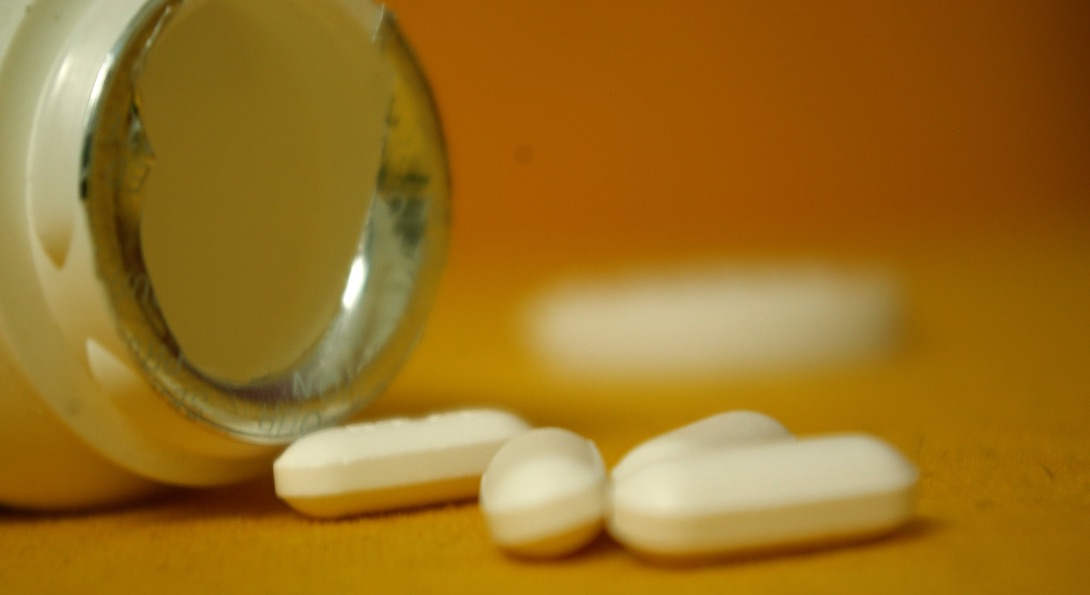People, politics and poison: the Tylenol® murders revisited forty years later

About this story Heading link
Michael Petros, DrPH ’11, MPH ’84, is a clinical assistant professor at the UIC School of Public Health and core faculty in SPH’s Doctor of Public Health Leadership (DrPH) program. Petros served 38 years at the City of Chicago and State of Illinois public health laboratories, first as a senior microbiologist in serology/virology and later, as chief of operations for newborn screening. During his tenure in the laboratory, Dr. Petros became a recognized expert in fluorescent microscopy and conducted training seminars for local health department laboratory staff. He developed quality control processes for high throughput population-focused screening technologies and contributed to national consensus documents on the subject. In this op-ed, he reflects on his experiences leading the public health response to the Tylenol murders of 1982.
Introduction Heading link

Wednesday, September 29, 1982 at 6:30am CDT, the nightmare that was to be known as the “Tylenol® Murders” began1. At first, the story focused in the Chicago/Cook County area but soon spread to the entire country and around the world.
The story would eventually involve law enforcement on local, state and federal levels, emergency responders, the medical examiner’s office, the hospital medical care system, and to its credit, local public health.
Once the story broke, the call volume at Illinois Poison Center (which normally averaged about 40-60 calls per 24 hours), approached 800 calls in a similar time period2.
The product in question was Extra Strength Tylenol® capsules, manufactured by the McNeil Consumer Healthcare division of Johnson & Johnson. Seven fatalities were linked to ingestion of this over-the-counter medicine. The victims (5 female, 2 male) ranged in age from 12 – 35 years. Three members of the same family succumbed after sharing the same bottle of capsules. The products were purchased at different retail locations in the Chicago area and were manufactured at two different out-of-state facilities (Pennsylvania and Texas). Clearly, the products were tampered with after manufacture. Analysis determined that the capsules were laced with crystals of potassium cyanide, which can be lethal within 15 minutes of ingestion. Potassium cyanide interferes with the electron transport chain in the mitochondria of cells and the body becomes unable to generate adenosine triphosphate for cellular respiration3,4.
Eventually, one individual was brought to justice, but not for the actual product tampering and poisoning. A week after the first deaths, a handwritten letter arrived at Johnson & Johnson headquarters. It read in-part: “Since the cyanide is inside the gelatin, it is easy to get buyers to swallow the bitter pill. … So far, I have spent less than $50 and it takes me less than 10 minutes per bottle.” James William Lewis was accused of sending the letter to Johnson & Johnson demanding $1 million to stop the cyanide murders. Lewis was arrested, charged, tried and convicted of extortion and served more than ten years in federal prison5.
No further deaths beyond the seven were linked to this particular incident. However, concerns on the part of the public continued for some time after. It was reported that Halloween candy sales were down approximately 20 percent in 19826. “Copycat” incidents continued from time to time7.
Johnson & Johnson established a communication relationship with the Chicago Police Department, the Federal Bureau of Investigation and the US Food and Drug Administration. The company remained an active partner in the investigation8.
If there is any “good” to emerge from this incident, it is the increased protection offered by tamper-resistant packaging of consumer products such as over-the-counter medications and prepared food products.
The incident is also a case study in how a corporate entity could respond to a criminal incident, affecting confidence in a manufactured product. About 31 million bottles of Tylenol® capsules were removed from store shelves and recalled. The response by Johnson & Johnson became a model for crisis management. Johnson & Johnson’s approach was successful in that it was later able to re-release Tylenol® capsules in triple-sealed containers, now a pharmaceutical industry standard. Eventually, two-piece capsules were replaced with solid caplets.
Shortly thereafter, the so-called “Tylenol bill” was passed, making it a federal offense to tamper with products. In 1989, the FDA established tamper-proof guidelines for consumer products9.
In 2011, the FBI requested DNA samples from Ted Kaczynski (AKA: the “Unabomber”), who is serving eight consecutive life sentences in federal prison for murder and related crimes10. In 1982, Kaczynski occasionally stayed at his parents’ home in suburban Chicago11.
The case remains open and unsolved to this day12.
Author's reflections Heading link
On Friday, October 1, 1982, 48 hours after the first reported death, there was an emergency meeting for all the section chiefs of the Chicago Department of Health, Division of Laboratories. At this time, I was serving as the acting section chief of serology and virology. The Division of Laboratories was located in the lower level of the R.J. Daley Center in downtown Chicago and consisted of approximately 80 laboratory professional and support staff, organized into the microbiology, virology/serology, clinical chemistry/hematology, chemistry/toxicology, hemoglobinopathy and gynecologic cytology sections.
We had all been following the escalating and alarming news stories about the multiple deaths, apparently being related to ingestion of adulterated Tylenol®. To those of us familiar with capacity of the various local laboratories (Chicago Police Crime Lab, Illinois Department of Public Health Toxicology Lab, Illinois State Police Crime Lab, etc.) including our own Chemistry/Toxicology unit, we knew that sooner or later, our labs would become involved. Indeed, after a relatively brief discussion, the section chief team proposed a plan to provide support to local laboratories involved in the Tylenol® investigation. It was agreed that our team would be able to provide emergency “surge capacity” to the investigation for 48 uninterrupted hours. We would move to 12 hour shifts around the clock for the weekend, with re-evaluation on Monday October 4th. Everyone was “on deck”, including clerical and support staff. Those of us section chiefs used our best people and leadership skills to mobilize our staff. We were successful. This spoke volumes about the dedicated nature of the skilled public servants we supervised.
For those 48 plus hours, we opened and checked innumerable containers of Extra Strength Tylenol®. Mayor Jane Byrne called a press conference to update Chicagoans on the situation and announced that all Tylenol® products would be removed from the store shelves in Chicago. The removed products were delivered to the our labs by Chicago Police and Health Department messengers.
Acetaminophen, the primary active ingredient in Tylenol®, is a white powder and should have been the only contents of the capsules. The tedious checking process consisted of physically pulling-apart capsules and looking for crystals of potassium cyanide. While potassium cyanide has a distinct aroma (i.e., ‘bitter almonds’), this ability is genetic, and only about 50 percent of the population is able to detect that by smell13. It is also important to note that as group, cyanides are potential chemical weapons agents, and air concentrations of 200 parts per million can be rapidly fatal14. So the painstaking process of carefully separating the sections of the capsules and visually inspecting the contents of thousands of those capsules was the order of the day.
On Monday, October 4, we re-evaluated the emergency situation. Doing this was critical because the daily routine work would be delivered to CDOH-DOL beginning mid-day. There was no additional surge capacity available to do the routine work and continuing the Tylenol® response. For perspective of the normal workload, each day, the Department of Laboratories processed approximately 1000 syphilis serology specimens, 1200-1400 gonorrhea cultures, 200 – 400 strep throat cultures, hundreds of pre-natal rubella tests, pediatric blood lead, hematology and clinical chemistry specimens, various food product complaints, routine milk quality tests and animal rabies tests involving human exposure15. Given the realities of daily throughput and turn-around-time commitments for analytical results, it was determined to continue a scaled-back Tylenol® response, but shift focus to the routine analytical responsibilities. “Scaled-back” being a relative term, as by this time, there was palpable panic in the public’s mind, so the department began receiving non-Tylenol® over-the-counter products, street drugs and related accoutrements, such as used syringes, razor blades and pipes. Triage at specimen receipt was instituted.
Gradually, Department of Laboratories testing life returned to normal over the next weeks. But the memories of those who were “there”, remain. Consumer products were subsequently marketed in tamper-resistant packaging. The question remains, “Why?” Why would someone commit such a series of horrific, random acts? How could public health and law enforcement prepare to respond in the future?
On December 31, 1993, the Chicago Department of Health, Division of Laboratories ceased operations and most testing responsibilities transferred to the State of Illinois Public Health Laboratory. On that last day, there remained a secure storage room containing the Tylenol® investigation materials processed by the CDOH-DOL eleven years earlier, awaiting disposition. The person or persons who committed this act of domestic chemical terrorism remain unknown.
This article is dedicated to the staff of the Chicago Department of Health, Division of Laboratories, many now deceased, who rose to the call to protect and reassure our Chicago residents.
References Heading link
- https://www.chicagomag.com/Chicago-Magazine/October-2012/Chicago-Tylenol-Murders-An-Oral-History/
- https://ipcblog.org/2010/02/02/recollections-of-the-1982-chicago-tylenol%c2%ae-cyanide-poisonings/
- https://forensicsciencesociety.com/thedrip/the-cold-case-tylenol-murders
- https://www.discovermagazine.com/health/the-tylenol-murders-changed-the-way-we-take-medicine
- https://www.abajournal.com/magazine/article/chicago_tylenol_murders
- Victor, Daniel; Ortiz, Aimee (October 27, 2021). “That Tainted Halloween Candy Myth Just Won’t Go Away”. The New York Times.
- http://content.time.com/time/nation/article/0,8599,1878063,00.html
- Andrews, Robert V. (2005). “Crisis Communications and the Tylenol Poisonings”. In Heath, Robert (ed.). Encyclopedia of Public Relations. SAGE Publications, Inc. pg. 225–226. doi:10.4135/9781412952545.n105. ISBN 9780761927334.
- https://www.corboydemetrio.com/cases-tylenol-tampering-litigation
- Woolner, Ann (May 19, 2011). “FBI Wants Unabomber’s DNA for 1982 Tylenol Poisoning Probe”. Bloomberg News. Archived from the original on May 22, 2011.
- “FBI wants to test Unabomber DNA in Tylenol killings“. Daily Herald. May 19, 2011. Archived from the original on June 24, 2011. http://www.dailyherald.com/article/20110519/news/705199967
- https://archives.fbi.gov/archives/chicago/press-releases/2009/feb04_09.htm
- Jane’s Chem-Bio Handbook. 2nd ed. Jane’s Information Group. 2002. pg 101.
- PDR Guide to Biological and Chemical Warfare Response, Thomson/Physicians’ Desk Reference, 2002. pg 55-56. ISBN: 1-56363-426-0
- 150 Years of Municipal Health Care in the City of Chicago. Official publication. Shirley Haas, Director of Community Education, CDOH, editor. 1985.